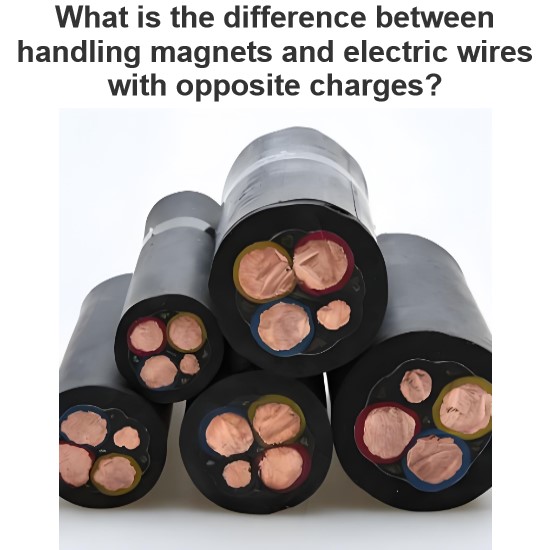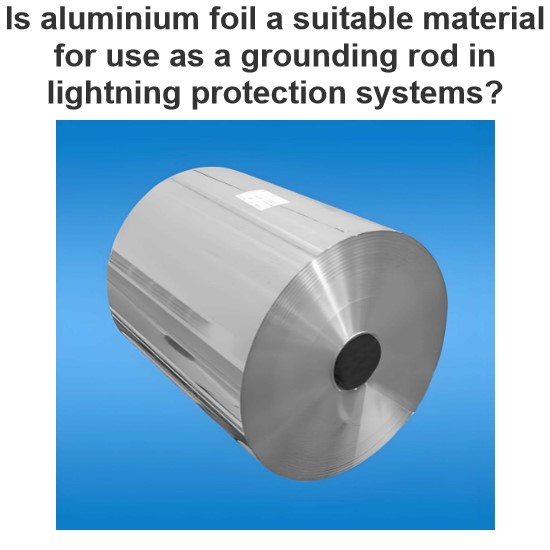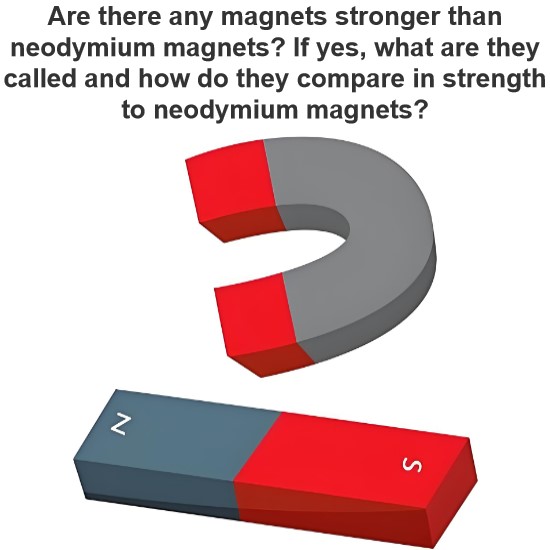Magnetostriction: A Property of Magnetic Materials
Magnetostriction is defined as the property of some magnetic materials that causes them to change their shape or dimensions when they are magnetized by an external magnetic field. The change in size or length of a material due to magnetostriction depends on the strength and direction of the applied magnetic field, as well as the magnetic anisotropy and crystal structure of the material.
Magnetostriction can be used to convert electromagnetic energy into mechanical energy, or vice versa, and is the basis for many applications such as actuators, sensors, transducers, transformers, motors, and generators.
What is Magnetostriction?
Magnetostriction was first discovered by James Joule in 1842 when he observed that an iron rod elongated slightly when magnetized along its length, and contracted slightly when magnetized across its width. This phenomenon is known as Joule’s effect, and it occurs in most ferromagnetic materials (materials that can be magnetized by an external field) and some ferrimagnetic materials (materials that have two opposite magnetic sublattices).
The physical mechanism behind magnetostriction is related to the internal structure of magnetic materials, which consists of microscopic regions called domains. Each domain has a uniform magnetization direction, which is determined by the balance between the magnetic anisotropy energy (the tendency of the material to align its magnetization along certain crystal directions) and the magnetostatic energy (the tendency of the material to minimize its magnetic poles).
When an external magnetic field is applied to a magnetic material, it exerts a torque on the domains, causing them to rotate and align with the field direction. This process involves the movement of domain walls (the boundaries between domains with different magnetization directions) and the deformation of the crystal lattice (the arrangement of atoms in the material). As a result, the material changes its shape or dimensions according to its magnetostrictive strain (the fractional change in length or volume due to magnetostriction).
The magnetostrictive strain depends on several factors, such as:
The magnitude and direction of the applied magnetic field
The saturation magnetization (the maximum possible magnetization) of the material
The magnetic anisotropy (the preference for certain magnetization directions) of the material
The magnetoelastic coupling (the interaction between magnetization and elastic strain) of the material
The temperature and stress state of the material
The magnetostrictive strain can be positive or negative, depending on whether the material expands or contracts when magnetized. Some materials exhibit a reversal in sign of their magnetostrictive strain when exposed to high magnetic fields, which is known as Villari reversal.
The magnetostrictive strain can be measured by various methods, such as optical interferometry, strain gauges, piezoelectric transducers, or resonant techniques. The most common parameter used to characterize magnetostriction is the magnetostriction coefficient (also called Joule’s coefficient), which is defined as:
λ=LΔL
where ΔL is the change in length of material when magnetized from zero to saturation, and L is its initial length.
Magnetostrictive Materials
There are many materials that exhibit magnetostriction, but some of them have higher values and better performance than others. Some examples of magnetostrictive materials are:
Iron: Iron is one of the most common and widely used magnetostrictive materials, due to its high saturation magnetization and low cost. However, iron also has some disadvantages, such as a low magnetostriction coefficient (about 20 ppm), high hysteresis loss (the energy dissipated during each cycle of magnetization), and high eddy current loss (the energy dissipated due to induced currents in conductive materials in the material). Iron also has a low Curie temperature (the temperature above which a material loses its ferromagnetic properties), which limits its use in high-temperature applications.
Nickel: Nickel has a higher magnetostriction coefficient than iron (about 60 ppm), but also a higher hysteresis loss and eddy current loss. Nickel also has a low Curie temperature (about 360 °C) and is prone to corrosion.
Cobalt: Cobalt has a moderate magnetostriction coefficient (about 30 ppm), but a high saturation magnetization and a high Curie temperature (about 1120 °C). Cobalt also has a low hysteresis loss and eddy current loss, making it suitable for high-frequency applications.
Iron-Aluminum Alloy (Alfer): This alloy has a high magnetostriction coefficient (about 100 ppm), a high saturation magnetization, and a high Curie temperature (about 800 °C). It also has a low hysteresis loss and eddy current loss, and good mechanical properties. However, it is difficult to fabricate and requires special heat treatment.
Iron-Nickel Alloy (Permalloy): This alloy has a low magnetostriction coefficient (about 1 ppm), but a high saturation magnetization and a high permeability (the ability of a material to support an internal magnetic field). It also has a low hysteresis loss and eddy current loss, making it ideal for magnetic shielding and recording applications.
Cobalt-Nickel Alloy: This alloy has a moderate magnetostriction coefficient (about 20 ppm), but a high saturation magnetization and a high Curie temperature (about 950 °C). It also has a low hysteresis loss and eddy current loss, and good corrosion resistance.
Iron-Cobalt Alloy: This alloy has a moderate magnetostriction coefficient (about 30 ppm), but a very high saturation magnetization and a high Curie temperature (about 980 °C). It also has a low hysteresis loss and eddy current loss, and good mechanical properties.
Cobalt-Iron-Vanadium Alloy (Permendur): This alloy has a low magnetostriction coefficient (about 5 ppm), but a very high saturation magnetization and a very high Curie temperature (about 1400 °C). It also has a low hysteresis loss and eddy current loss, making it suitable for high-power applications.
Ferrites: Ferrites are ceramic materials composed of iron oxides and other metal oxides, such as cobalt oxide or nickel oxide. They have low magnetostriction coefficients (less than 10 ppm), but also low saturation magnetization and low permeability. They have very low hysteresis loss and eddy current loss, making them ideal for high-frequency applications. They also have high Curie temperatures (above 400 °C) and good corrosion resistance.
Rare Earths: Rare earths are elements with atomic numbers from 57 to 71, such as lanthanum, cerium, neodymium, samarium, gadolinium, terbium, dysprosium, holmium, erbium, thulium, ytterbium or lutetium. They have very high magnetostriction coefficients (up to 1000 ppm), but also very high hysteresis loss and eddy current loss. They have moderate saturation magnetization and permeability, but low Curie temperatures (below 300 °C). They are often used in combination with other metals or compounds to form alloys or intermetallics with improved properties.
Terfenol-D: Terfenol-D is an intermetallic compound composed of terbium, iron, and dysprosium. It has the highest magnetostriction coefficient ever recorded (about 2000 ppm), which means that it can produce very large strains when magnetized. It also has a high saturation magnetization and a high Curie temperature (about 380 °C). However, it also has a very high hysteresis loss and eddy current loss, which limits its efficiency and frequency range. It also requires a high magnetic field (about 800 kA/m) to reach its maximum strain, which increases its power consumption and cost.
Galfenol: Galfenol is an alloy of iron and gallium, with a composition of about Fe81Ga19. It has a moderate magnetostriction coefficient (about 250 ppm), but a very low hysteresis loss and eddy current loss, which make it more efficient and durable than Terfenol-D. It also has a high saturation magnetization and a high Curie temperature (about 700 °C). It can operate at low magnetic fields (about 100 kA/m) and high frequencies (up to 10 kHz).
Metglas: Metglas is a metallic glass composed of iron, boron, silicon, and other elements. It has a low magnetostriction coefficient (about 20 ppm), but a very high saturation magnetization and a very high permeability. It also has a very low hysteresis loss and eddy current loss, making it ideal for magnetic shielding and power conversion applications.
Magnetostriction Applications
Magnetostriction has many applications in various fields, such as:
Actuators: Actuators are devices that convert electrical energy into mechanical motion, or vice versa. Magnetostrictive actuators use magnetostrictive materials to produce linear or rotary motion when subjected to a magnetic field or to generate a magnetic field when subjected to mechanical stress. Magnetostrictive actuators have advantages over other types of actuators, such as piezoelectric or electrostatic actuators, in terms of higher force, larger displacement, faster response, lower power consumption, simpler design, and longer lifetime.
Sensors: Sensors are devices that measure physical quantities, such as force, pressure, temperature, displacement, or magnetic field. Magnetostrictive sensors use magnetostrictive materials to detect changes in these quantities by measuring the induced strain or magnetization in the material. Magnetostrictive sensors have advantages over other types of sensors, such as strain gauges or capacitive sensors, in terms of higher sensitivity, accuracy, stability, reliability, and durability.
Transducers: Transducers are devices that convert one form of energy into another, such as sound or ultrasound. Magnetostrictive transducers use magnetostrictive materials to generate or receive acoustic waves by applying or detecting a magnetic field on the material. Magnetostrictive transducers have advantages over other types of transducers, such as piezoelectric or electroacoustic transducers, in terms of higher power output, wider bandwidth, lower distortion, and better impedance matching.
Transformers: Transformers are devices that transfer electrical energy from one circuit to another by using electromagnetic induction. Magnetostrictive transformers use magnetostrictive materials to enhance the coupling between the primary and secondary coils by changing the shape or size of the core material according to the input current or voltage. Magnetostrictive transformers have advantages over conventional transformers in terms of higher efficiency, lower weight, smaller size, and lower noise.
Motors and Generators: Motors are devices that convert electrical energy into mechanical motion, while generators are devices that convert mechanical motion into electrical energy. Magnetostrictive motors and generators use magnetostrictive materials to produce or harvest rotational motion by applying or extracting a magnetic field on the material. Magnetostrictive motors and generators have advantages over conventional motors and generators in terms of higher torque, lower speed, simpler design, and lower maintenance.
Magnetostriction Effects
Magnetostriction has some effects that are related to its interaction with mechanical stress or torque, such as:
Villari Effect: This is the inverse of magnetostriction, where the magnetic susceptibility (the degree of magnetization in response to an applied field) of material changes when it is subjected to mechanical stress. This effect can be used to measure stress or strain in a material by detecting its magnetic output.
Matteucci Effect: This is the creation of a helical anisotropy (the preference for certain magnetization directions along a spiral) of the susceptibility of a magnetostrictive material when it is subjected to a torque. This effect can be used to measure torque or angular displacement in a material by applying or detecting a magnetic field.
Wiedemann Effect: This is the twisting of a magnetostrictive material when a helical magnetic field is applied to it. This effect can be used to generate or harvest rotational motion in a material by applying or extracting a magnetic field.
Conclusion
Magnetostriction is a property of some magnetic materials that causes them to change their shape or dimensions when they are magnetized by an external magnetic field. Magnetostriction can be measured by the magnetostriction coefficient, which is the fractional change in length or volume due to magnetostriction.
Magnetostriction has many applications in various fields, such as actuators, sensors, transducers, transformers, motors, and generators, where it can be used to convert energy between the magnetic and elastic states, or vice versa.
Magnetostriction also has some effects that are related to its interaction with mechanical stress or torque, such as the Villari effect, Matteucci effect, and Wiedemann effect, where it can be used to measure or generate stress, strain, torque, angular displacement, or rotational motion.
Magnetostrictive materials are materials that exhibit magnetostriction, and they vary in their magnetostriction coefficients, saturation magnetization, magnetic anisotropy, Curie temperature, hysteresis loss, and eddy current loss. Some examples of magnetostrictive materials are iron, nickel, cobalt, iron-aluminum alloy (Alfer), iron-nickel alloy (Permalloy), cobalt-nickel alloy, iron-cobalt alloy, cobalt-iron-vanadium alloy (Permendur), ferrites, rare earth, and their alloys or compounds (such as Terfenol-D and Galfenol), and metallic glasses (such as Metglas).
Magnetostriction is a fascinating phenomenon that demonstrates the interplay between magnetism and mechanics in materials science. It has many potential applications in various fields that require high performance and efficiency in energy conversion and transmission.
Statement: Respect the original, good articles worth sharing, if there is infringement please contact delete.
Electrical4U is dedicated to the teaching and sharing of all things related to electrical and electronics engineering.




